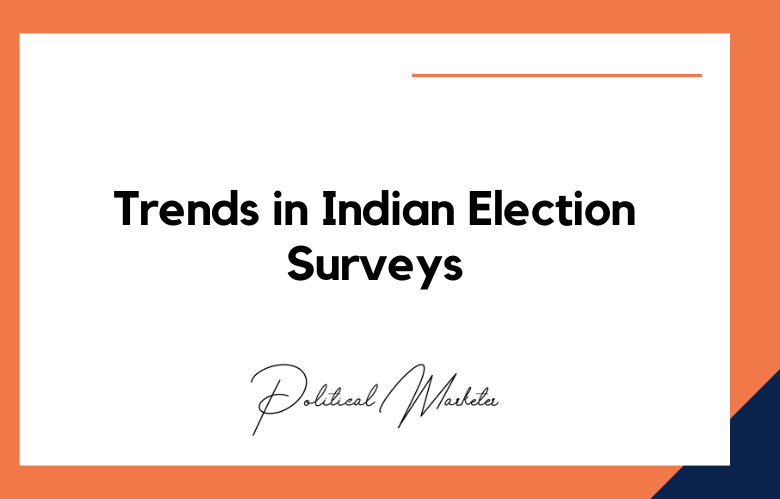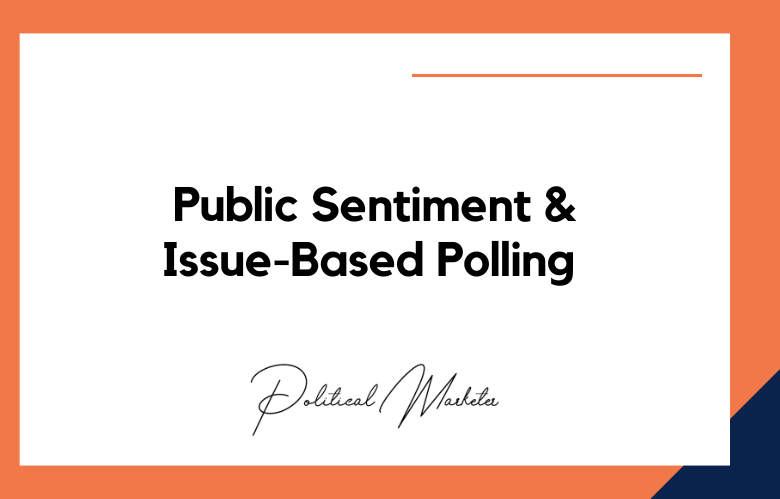The power of artificial intelligence (AI) lies in its ability to analyze immense quantities of data with speed and accuracy. It helps predict outcomes and enables targeting messaging and ads to people based on their preferences.
This method of persuasion, known as microtargeting, has been a weapon of choice for marketers for years. But now, political campaigns have adopted AI and microtargeting techniques to sway votes during elections.
In today’s blog, we’ll discuss how AI-powered microtargeting works and how it can be effectively used in political campaigns. Microtargeting techniques in political campaigns refer to publicly available data and social media profiles to create a personalized message that resonates with each voter.
The Art of Microtargeting: AI’s Role in Winning Hearts and Votes
Microtargeting has revolutionized political campaigns in recent years, thanks to artificial intelligence’s role in helping win hearts and votes.
By using AI algorithms to analyze data on voters’ behaviors, preferences, and interests, political campaigns can now tailor their messages and outreach strategies to reach and engage specific segments of the electorate more effectively.
This approach has been efficient in recent presidential elections, where candidates have used microtargeting to reach critical demographics in swing states.
For example, during the 2016 US election, Donald Trump’s campaign used AI-powered microtargeting to get working-class voters in crucial swing states like Pennsylvania and Michigan. Meanwhile, Hillary Clinton’s campaign deployed a similar strategy targeting key minority groups in swing states like Florida and North Carolina.
Harnessing the Power of AI: Microtargeting the Electorate
Harnessing the power of artificial intelligence (AI) has revolutionized how political campaigns target their electorate. AI-powered microtargeting has become an indispensable tool for political campaigns, enabling them to analyze vast amounts of voter data and gain insights into voters’ preferences, beliefs, and behavior.
Microtargeting involves segmenting the electorate into smaller sub-groups based on various attributes, such as age, gender, location, income, education, and political affiliation.
AI algorithms then analyze these sub-groups’ historical behaviors and data to identify patterns and predict their likelihood of supporting a specific candidate or issue. This enables campaigns to tailor their messaging and outreach efforts to each sub-group, increasing their chances of persuading voters to support their cause.
A Game Changer in Politics: AI-Driven Microtargeting
Artificial intelligence (AI) has become a game-changer in politics in recent years. One of the most significant developments in this regard is AI-driven microtargeting.
This innovative technique uses complex algorithms to analyze massive amounts of data, including social media activity, online searches, and even purchasing behavior, to identify and categorize individuals with similar political leanings.
From there, political campaigns can use this information to create highly personalized messaging and advertising campaigns that speak specifically to each micro-targeted group. The goal is to appeal to each group’s specific values, beliefs, and concerns to sway more potential voters toward the campaign’s side.
AI and Microtargeting: The Winning Duo in Campaigning
In modern political campaigning, artificial intelligence (AI) and microtargeting have emerged as a powerful and winning combination. AI allows for advanced data analysis and predictive modeling, while microtargeting enables campaigns to reach specific groups of voters with tailored messages.
With today’s vast data, AI can help campaigns sort through and make sense of it all. Using machine learning algorithms, campaigns can analyze voting patterns, consumer behavior, social media engagement, and more data to identify potential supporters and predict their likelihood of voting for a particular candidate.
Microtargeting allows campaigns to take this information and craft highly tailored messaging and advertising to specific voter groups. By identifying characteristics such as age, gender, income, education level, and geographic location, campaigns can create messages that resonate with particular population segments.
Revolutionizing Political Campaigns: Microtargeting with AI
Artificial Intelligence (AI) in political campaigns has revolutionized how candidates communicate with their target audience in recent years. Before this innovation, traditional campaign strategies involved cost-intensive, broad-based advertising with one-way communication.
Microtargeting, using AI, has made it possible for candidates to reach voters more personally. Campaign organizers can now use a wealth of data on individuals, including interests, beliefs, and purchasing history, to create tailored messages and conduct a more personalized outreach.
The benefits of microtargeting have been seen in recent elections worldwide. For instance, in the 2016 US elections, the Trump campaign reportedly used Cambridge Analytica, a data analysis firm, to create individualized communications based on social media insights.
This AI-based approach enabled them to send specific messages to certain demographics based on the data mined from social media.
Winning Hearts and Votes: Unleashing AI’s Microtargeting Potential
In recent years, using artificial intelligence (AI) in political campaigns has become a popular topic. With the increasing amount of data available, AI has the potential to transform the way campaigns are run. One area where this potential has been notably recognized is microtargeting.
Microtargeting is the use of data to identify a small or specific group of individuals and tailor messaging to persuade them to vote. This approach can be efficient, as it allows campaigns to focus on those most likely to vote a certain way and use messaging that speaks directly to them.
AI has the potential to take microtargeting to the next level. With its ability to analyze massive amounts of data, AI can identify patterns within demographics that would be nearly impossible for humans to find. This could allow campaigns to identify new target groups or refine their messaging for existing ones.
The Future of Political Campaigns: AI-Enabled Microtargeting
As technology evolves, political campaigns use artificial intelligence (AI) and its ability to micro-target voters with unprecedented precision. AI algorithms can use data sets on individual voter behavior and preferences to identify potential supporters and tailor messages that resonate specifically with them.
This AI-enabled microtargeting has the potential to change the landscape of political campaigning. Rather than casting a wide net and hoping to attract undecided voters, campaigns can now hone in on specific groups of voters with messages that are tailored to their interests and beliefs.
This increases the likelihood of winning over those voters and maximizes the impact of campaign resources by focusing on those who are most likely to be swayed.
Conclusion:
Microtargeting with AI can be a powerful tool for political campaigns. The ability to analyze large swaths of public data and develop personalized and targeted messaging creates an effective persuasion instrument.
While no doubt targeted messaging can positively influence voting behavior, microtargeting campaigns have received criticism for potentially violating individuals’ privacy. Finding a balance between microtargeting and the need for privacy protection is crucial.
As AI technologies evolve and data collection regulations become more stringent, campaigns must abide by ethical standards.
They should also strive for transparency to avoid data manipulation and help citizens recognize attempts to sway their votes. It’s essential to consider the ethical implications of using AI for political campaigns and develop best practices that promote responsible data management while maintaining a free and fair democracy.
Call: +91 9848321284
Email: [email protected]











